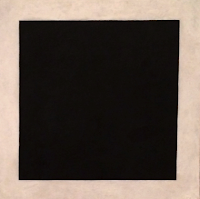Carolyn Light Bell shared her thoughts on why she selected the work of Milwaukee Artist Lab artist Berit Engen as expressing wisdom. The following work from left to right is Exile (By the River of Babylon), Yiddish Wisdom: If everyone pulled in the same direction, the whole world would fall down and Yiddish Wisdom: It is easier to guard a sack of fleas than a girl in love.
by Carolyn Light Bell
Berit Engen has depicted the upward reaching toward a greater energy. A supplication. Wisdom comes in knowing when and how to ask for help from powers greater than mine. The burning that comes from fire can be seen as both destruction and creation. Blueberries only grow from earth where fire has added nitrogen to the soil. In the same way, we bear new fruit from the death of our deeply-rooted hopes and dreams.
Ms. Engen’s work combines the elegance of Nordic design, which captures the order and simplicity of distilled natural beauty, with the movement and passion of Jewish experience, our constant striving toward God.
Her color and style are pleasing to the eye, capturing the insistent stretching up of all impulse. Her wisdom lies in knowing where to focus her talent—on what aspect of the human condition.
Rosyle Utan was particularly drawn to Barnett Newman's work and felt it expressed the concept of wisdom through challenging us to engage with the unknown. Below are her comments on her selection.
by Roslye Ultan
My response to making the selection of Barnett Newman, ONEMENT IV, 1953 (part of a series), for Art Lab discussion on the theme of wisdom – is/was indeed a formidable task. How does one begin to grasp in visual terms the ungraspable concept of wisdom? My first inclination was to go to the most expressive abstract works (Abstract Expressionism) of the Jewish painter/philosopher Barnett Newman—partly because our investigation is/was to search the annals of “Jewish” wisdom, and secondly because Newman did not try to offer an answer, but challenged us/the viewer to engage in a conversation with him/the art object in a vast spatial field unencumbered by any preconceived limitations. Rather, Newman offers/as well as seeks to understand the mystical inner workings of humankind through an ecstatic expanse of space into which he invites us to participate. I chose to go beyond what is known or seen into a more authentic source of primal inspiration – the awesome unknown/the place of doubt, of dreams, of myth which are conjured up when faced with a grand-field of intense blue divided by a white line (a Zip), me/you, struggling to find signs that might lead somewhere.
By Lynda Monik-Isenberg
I chose James Turrell's Skyspace in Austin Texas. It was an immediate reaction to the call Jay and I made for submissions. For me, James Turrell's artwork engages wisdom in intellectual, conceptual and emotional terms. He 'provides' light the ephemeral substance that bring us life, that marks our days and actions, that allows us to 'see'; he isolates and focuses it and us - allowing his participants to consider light in its wholeness (color, shape, time, sustenance, insight...). The work is contemplative and quiet with meaning made by the participant. This piece reminds me that wisdom is often simple, elegant, slow in coming and is born from interaction, reflection and quiet.
Phil Rosenbloom contributed Rodin's Gates of Hell and offered these thoughts.
by Phil Rosenbloom
I chose Rodin's Gates of Hell because it depicts Rodin's concept of the Artist's role in society. In the middle towards the top sits "the thinker" and he looks down on the rest of humanity in the form of Rodin's interpretation of Dante's Inferno. The artist's job is that of the thinker, looking, observing and thinking about the human condition.
Image by Anabelle Dureau
By Ann Ginsburg Hofkin
I found this on the Internet. It made me gasp a bit, since it is an image that portrays various elements, some of which may be difficult to define and impossible to contain. That is how I view the concept of wisdom...attempting an understanding of this is an enormous and exciting challenge.

Several offered Ted talks which elaborate to a much greater degree on the piece they selected. Anita Konikoff who chose Crochet Coral Reef (right) provided the Ted talk below on her selection. More images are available on this site.
And Paula Pergament offered this stunning Ted Talk by Jason deCaires Taylor which gives new meaning to wisdom as an interaction with nature and time.























